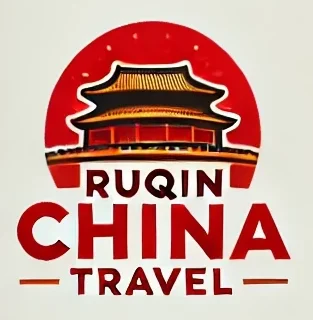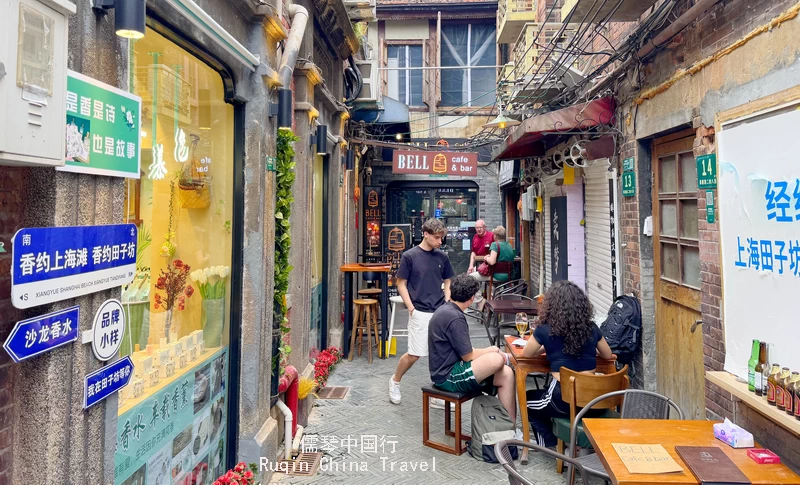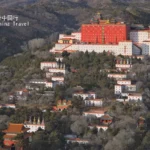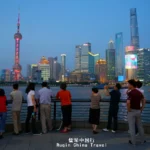Hidden within Shanghai’s bustling heart, I found Tianzifang—a maze of art and memory woven into narrow alleys. Once a cluster of old factories, now it blooms with the spirit of creation.
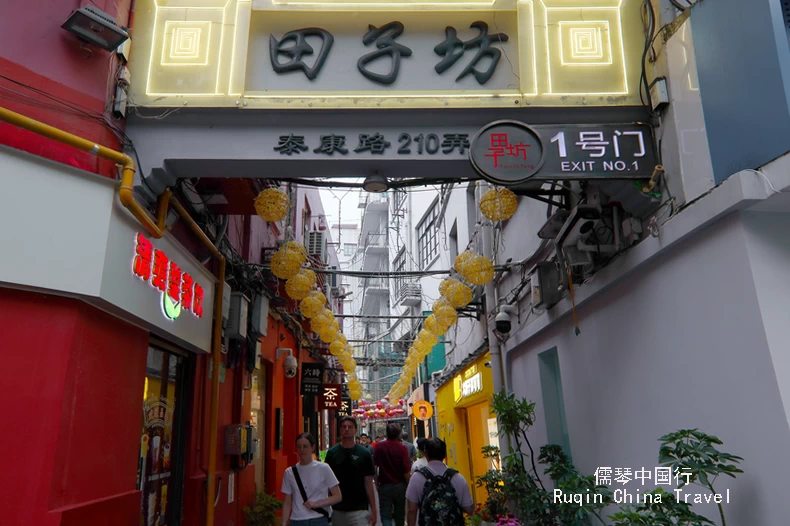
Soon, I found myself turning into Lane 210 on Taikang Road. As I stepped inside, the city’s roar faded, replaced by the soft whispers of history blending with the pulse of modern dreams.
In 1998, artist Chen Yifei opened a door here, letting light pour into the dusty old workshops. Around the same time, writer Huang Yongyu christened the neighborhood “Tianzifang,” after China’s earliest recorded artist, Tian Zifang. Since then, life here has danced between tradition and innovation, between the green-painted mailboxes and the avant-garde galleries tucked into every nook.
Next, I wandered deeper into Tianzifang’s ancient bones and found myself surrounded by its iconic Shikumen architecture. These structures, born from a marriage of East and West, rose in the late Qing Dynasty when this area fell into the French Concession. Back then, war and turmoil drove merchants, landowners, and officials from Jiangsu and Zhejiang to seek refuge here. Foreign real estate developers seized the moment, building sturdy homes that still whisper their stories today.
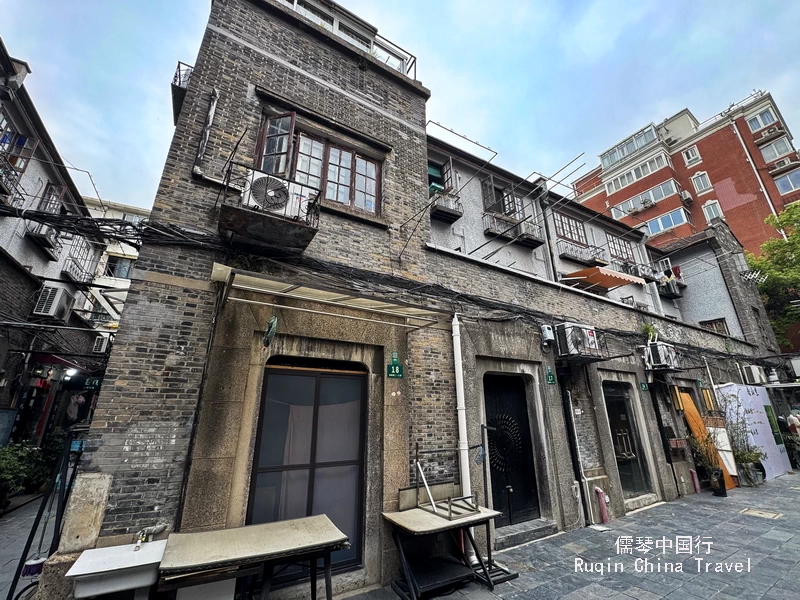
Shikumen buildings are defined by their enclosed courtyards and understated grace. Here, they abandoned ornate carvings for simplicity and practicality, yet carried the soul of Jiangnan’s traditional homes. Massive stone doorframes paired with heavy, dark lacquered wooden doors gave them their name—”Shikumen,” or “stone-gate houses.” Though many families have since moved on, some still linger in these alleys, holding fast to memories stitched into every worn doorstep and sunlit wall.
Next, I wandered beneath the tangled web of laundry lines and ivy-covered brick walls. The weathered stone paths stretched like silent rivers beneath my feet. Inn these crumbling corners, I felt something alive: the quiet thrum of resilience, the stubborn bloom of beauty.

The shops spilled out like treasures from an overturned chest. Tiny boutiques offered tea, cheongsam, handmade jewelry, scented candles, paper-thin ceramics and more.
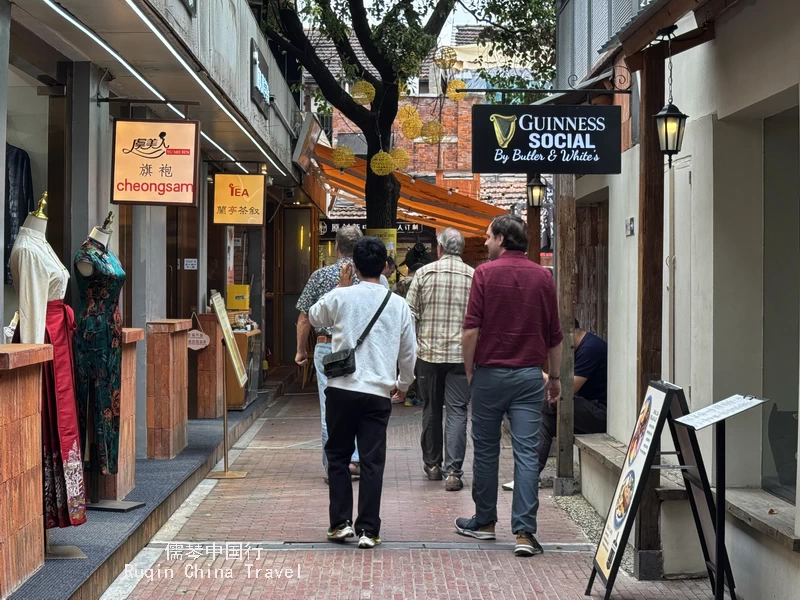
Additionally, every window seemed a small world, each brimming with the owner’s quiet, stubborn dreams.
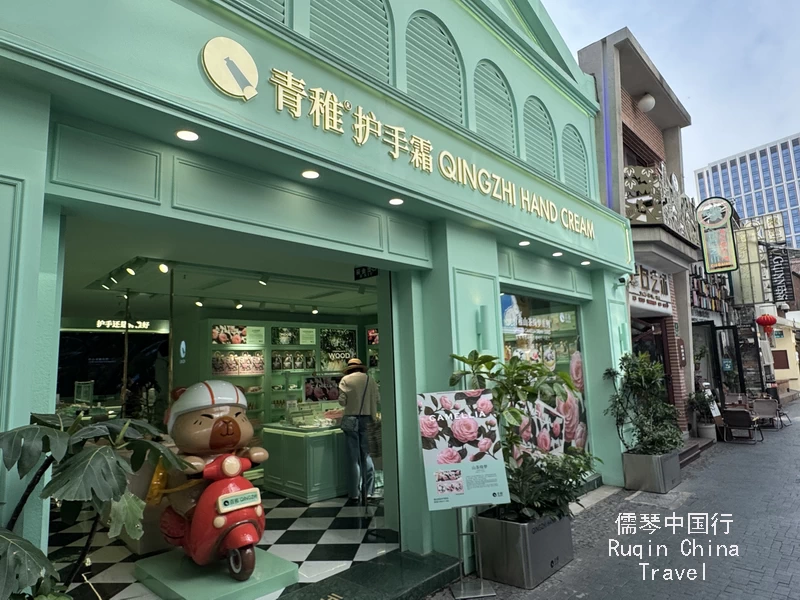
I picked up a hand cream from a store called “Qingzhi” (青稚护手霜)— each tube wrapped in zodiac signs and birth dates, like tiny talismans of memory. Address: No. 15, Lane 248, Taikang Road.

At “LUSHANGHAI,”(路上海), launched in 2010 right here in the vibrant streets of Tianzifang, the spirit of the city finds new life. This original T-shirt brand blends Chinese culture with modern design, creating wearable canvases that tell stories transcending time and tradition. Address: Room 103, No. 3, Lane 210, Taikang Road
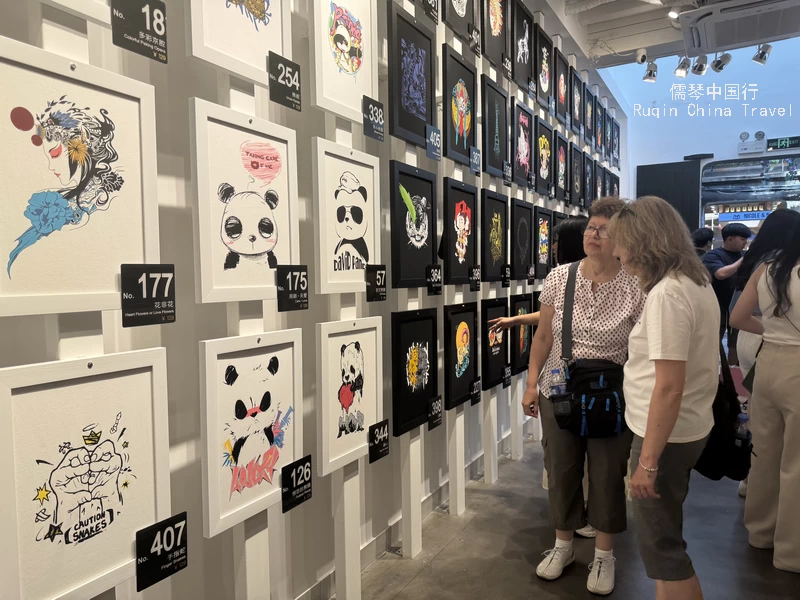
Crafted by designers from across Asia, each T-shirt bursts with colors, symbols, and the heartbeat of old and new Shanghai. I watched visitors pick their favorite images—dragons, peonies, laughing children—then see them pressed onto fresh cotton shirts. The press clanked cheerfully. Here, artistry wasn’t just to be seen; it was worn, lived, and carried forward.
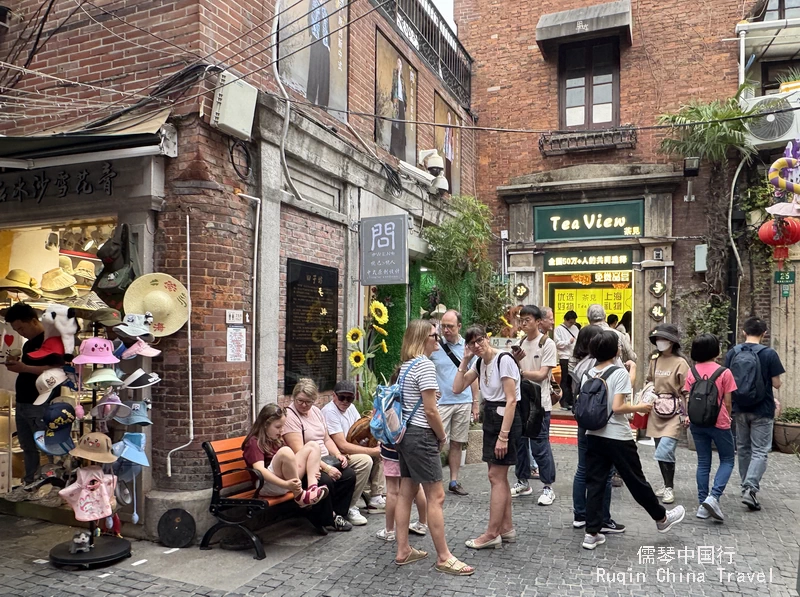
Next, I ducked into a bar. The scent of espresso hung heavy in the air. Old leather chairs sagged invitingly, and a gramophone spun smoky jazz tunes. I sat by the window, sipping a latte that tasted like roasted dreams. Time, it seemed, loosened its grip here.
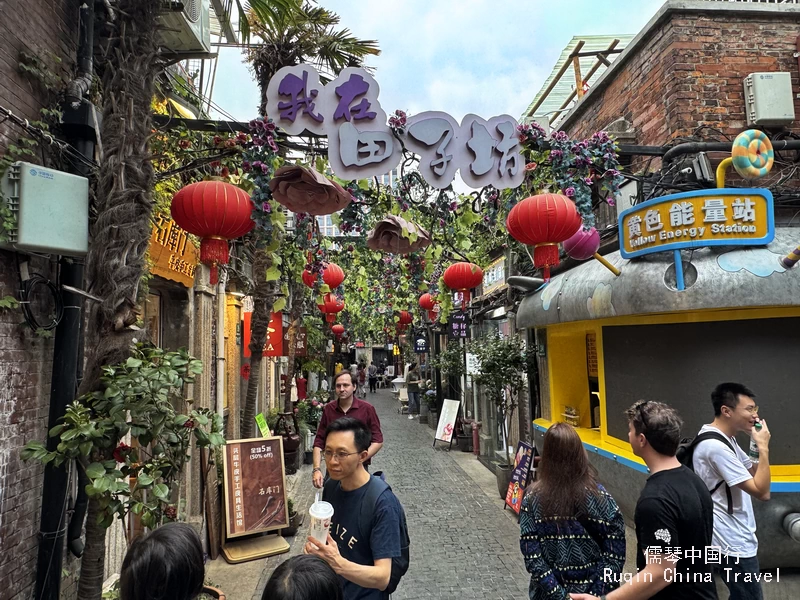
There was one place I could never resist—an old record-themed café, where black vinyls lined the walls like silent sentinels. When the sunlight hit just right, the records shimmered, and the saxophone’s lazy croon made the whole room sway. I often imagined myself as a jazz singer, lost between the notes and the warm arms of the afternoon.
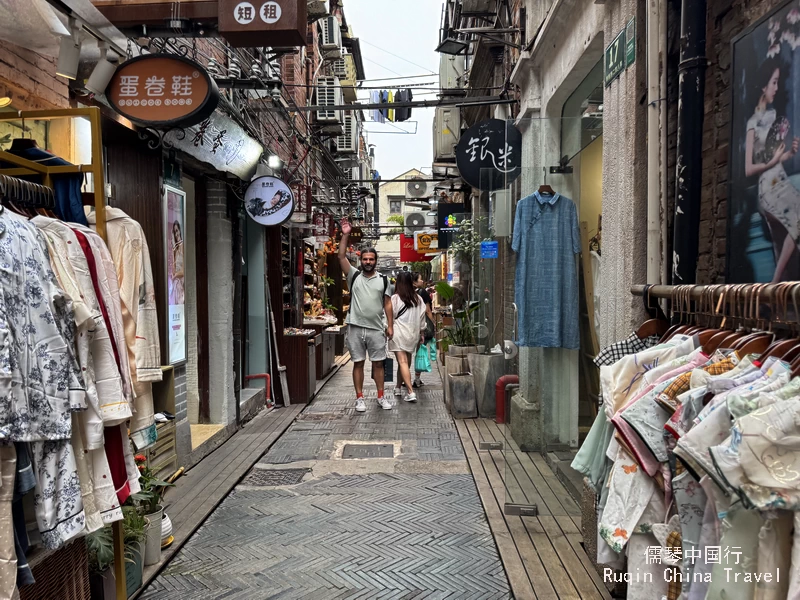
However, Tianzifang was not only about nostalgia. It was a living, breathing part of Shanghai, resisting the flattening waves of commercialism. With every painting, every handmade book, every clink of a steaming coffee cup, it stitched a new patch onto the city’s ever-changing quilt.
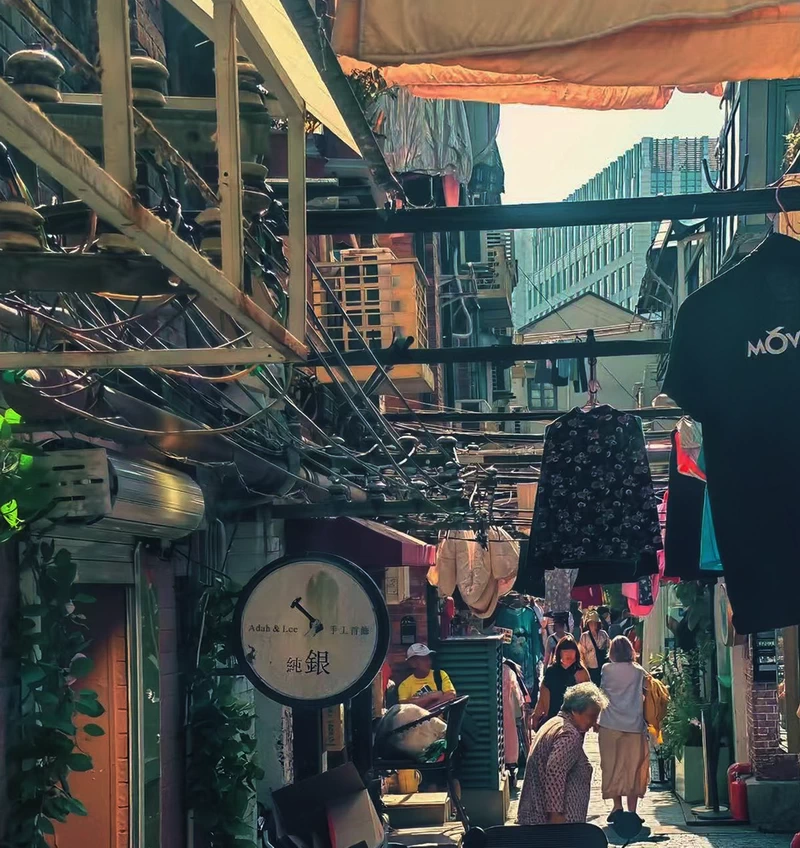
When the crowds thinned and dusk fell, I stood in the shadow of hanging laundry, listening. The heartbeat of Shanghai pulsed around me—a sewing machine’s rhythmic clatter, a coffee machine’s sudden sigh. This place, I realized, was never meant to be a museum. It was a living dialogue between past and present, tradition and tomorrow.
So tell me—if you wandered Tianzifang, what would catch your eye first? Would it be the carved wooden windows glinting in the sun, the shimmering glassworks in a tiny studio, or the lazy strains of a saxophone curling into the dusk? Share your dream of Tianzifang with me. Let’s meet there, in the golden hum of Shanghai’s heart.
Tianzifang Travel Guide
Basic Information
Tianzifang sits tucked away in Lane 210, Taikang Road, right in Shanghai’s Huangpu District. It weaves history and creativity into a living neighborhood full of surprises. Better yet, Tianzifang is open all day and free to enter, making it easy to explore at your own pace.
For the best experience, however, I suggest visiting on a weekday morning or early afternoon. By doing so, you can avoid the crowds that often fill the narrow lanes on weekends and holidays.
Getting There
Reaching Tianzifang is refreshingly simple. First, hop on Shanghai Metro Line 9. Afterward, get off at Dapuqiao Station and exit from Exit 1. Then, stroll just 140 meters, and you’ll find yourself stepping into its charming alleys.
Route Highlights
Start your journey by entering from Lane 210 on Taikang Road. Additionally, I recommend picking up a guide map near the entrance. It helps you get your bearings and spot hidden gems.
Next, wander through the narrow lanes. Explore vibrant galleries, handmade craft shops, and studios filled with imagination. Furthermore, don’t forget to slow down. The magic often hides in the tiny details — a shadow, a brushstroke, a whispered laugh.
For those who love photography, Tianzifang offers countless treasures. The old alleyways, traditional doorways, and nighttime lanterns create perfect photo spots.
Food Recommendations
Tianzifang is also a feast for food lovers. First, sample authentic local snacks like scallion pancakes, mini fried buns, and crab roe soup dumplings. Secondly, if you’re craving a longer meal, head to “Old Villa” for Western fare, or “Abao’s Pig Trotter Noodles” for a heartier, Shanghai-style treat.
Finally, no visit is complete without a cozy coffee break. Choose a charming café, sip slowly, and let the day drift by.
Tianzifang offers a rare blend of art, memory, and life in Shanghai. Whether you are an art lover or a food explorer, you will find your own piece of wonder here. So, plan ahead, dodge the crowds, and dive into a journey that feels both timeless and unforgettable.
